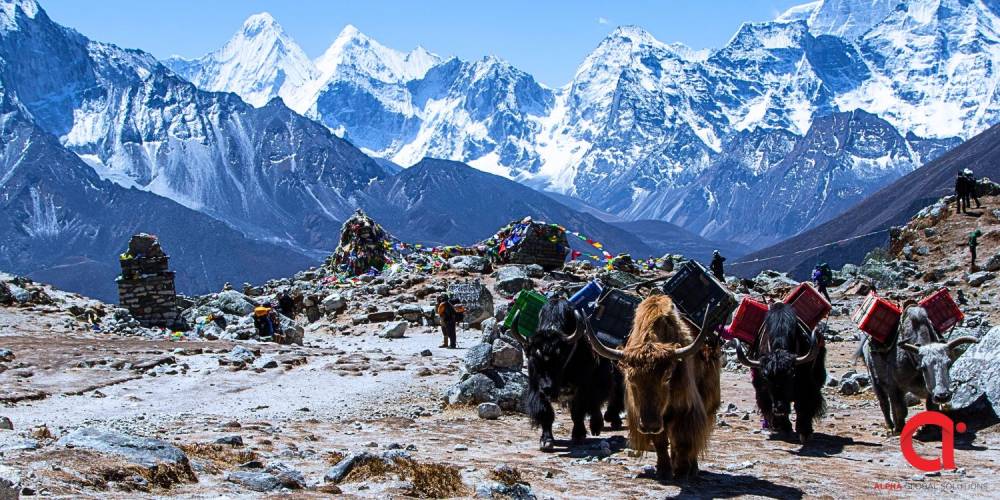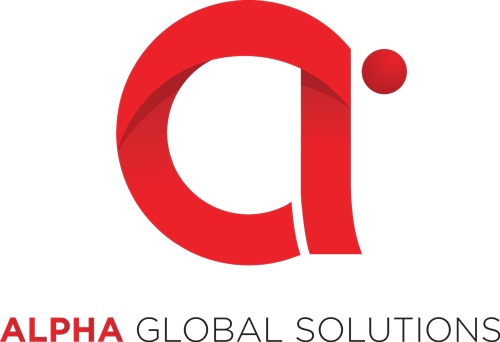
Introduction to Climbing Mount Everest
Climbing Mount Everest, the world's highest peak standing at 29,032 feet, is the ultimate goal for many adventure enthusiasts. Achieving this dream is not just about physical endurance but also involves meticulous planning and preparation. The allure of towering landscapes and the sense of conquering the roof of the world draw thousands every year. However, reaching Everest's summit isn't a routine hike—it's a monumental challenge fraught with unpredictable weather conditions, high altitudes, and significant risks.
Efforts to climb Everest aren't just limited to seasoned mountaineers; they require comprehensive training regimes, acclimatization to high altitudes, and substantial financial investment. The cost of an Everest expedition can range from $30,000 to over $100,000, depending upon the services, equipment, and support one opts for during the climb.
Preparing for such a feat involves more than physical and mental readiness; it also means securing the proper insurance coverage. Unfortunately, the inherent risks in high-altitude mountaineering are substantial. From potential health crises like altitude sickness to accidents and severe weather disturbances, numerous unpredictables can disrupt your climb. Therefore, ensuring you have the right insurance policies is crucial not only for peace of mind but also for financial protection in case something goes wrong.
In the following sections, we'll delve into the vital types of insurance every Everest climber should consider, and why each is essential for a successful and safe ascent.
Importance of Insurance for Everest Climbers
When embarking on the challenging and exhilarating journey of climbing Mount Everest, having the right insurance is more than just a safety net; it's a crucial element of your preparation. The extreme nature of this endeavor, coupled with the unpredictability of high-altitude environments, makes specialized insurance indispensable for climbers.
One of the primary reasons insurance is vital is the inherent risk associated with Everest expeditions. Climbers face a multitude of hazards, including severe weather conditions, avalanches, falls, and altitude sickness. These risks can result in serious injury or even death, necessitating medical treatment that can be exorbitantly expensive, especially in remote locations where standard healthcare is inaccessible.
Emergency evacuation is another critical concern. In the event of an accident or severe illness, climbers may need to be airlifted to a medical facility. Without insurance, these costs can easily escalate to tens of thousands of dollars, posing a significant financial burden.
Moreover, trip cancellations and interruptions are not uncommon due to unforeseen circumstances such as adverse weather or political instability. Having trip cancellation and interruption insurance ensures that climbers can recover some of their financial investments if their expedition is compromised.
Personal liability and equipment insurance also play a pivotal role. Climbers often rely on costly gear essential for their survival and success. Insurance protects against loss or damage to this equipment, ensuring that a climber is not left stranded without the necessary tools.
In conclusion, comprehensive insurance is a non-negotiable aspect of planning a Mount Everest climb. It safeguards your health, finances, and peace of mind, allowing you to focus on the climb itself.
Types of Essential Insurance Policies
When planning an expedition to climb Mount Everest, having the right insurance policies is crucial for your safety and peace of mind. Here are the key types of insurance you should consider:
1. Medical and Evacuation Insurance
Climbing Mount Everest isn't just physically grueling; it's also fraught with risks like altitude sickness, hypothermia, and injuries from falls. Medical and evacuation insurance is essential to cover potential medical emergencies. Policies often include coverage for helicopter rescues, which can be a lifesaver if you need immediate evacuation from high altitudes.
2. Trip Cancellation and Interruption Insurance
Given the significant investment of time and money in an Everest expedition, trip cancellation and interruption insurance can protect you from financial loss. This type of insurance can reimburse non-refundable expenses if your trip gets canceled or cut short due to unforeseen events, such as severe weather or personal emergencies.
3. Personal Liability Insurance
Accidents can happen, and if they do, personal liability insurance can shield you from legal repercussions. This coverage kicks in if you accidentally cause injury to another climber or damage someone else's property. Given the crowded conditions on the mountain, this is a valuable safety net.
4. Equipment Insurance
Lastly, don't overlook the importance of insuring your gear. High-quality climbing equipment is expensive, and losing or damaging vital gear at extreme altitudes can be both costly and dangerous. Equipment insurance ensures you can replace essential items quickly, keeping your expedition on track.
By securing these essential insurance policies, you can focus on the climb itself, knowing that you’re protected against potential setbacks and emergencies.
Medical and Evacuation Insurance
When climbing Mount Everest, obtaining medical and evacuation insurance is crucial. This isn’t just about protecting your investment; it’s about safeguarding your life. The extreme conditions and high altitude of Everest can lead to severe health issues like acute mountain sickness, frostbite, or even life-threatening injuries.
Medical insurance for Everest climbers should include comprehensive coverage for high-altitude mountaineering. This means it should cover emergency medical treatments, hospital stays, and medications specific to conditions encountered at altitudes above 5,000 meters. It’s important to ensure that your policy includes coverage for pre-existing conditions as well, which could be exacerbated by the strenuous climb.
Equally essential is evacuation insurance, often termed “heli-evac” or “rescue insurance.” Given Everest’s remote location, in the event of a serious injury or medical emergency, a helicopter evacuation is frequently the only viable option. These evacuations can be prohibitively expensive, often running into tens of thousands of dollars. A solid evacuation insurance policy will cover these costs, providing peace of mind that you can be airlifted to a hospital swiftly if the need arises.
Always read the fine print to make sure your insurance covers high-altitude trekking and not just standard travel. Companies like Global Rescue and World Nomads offer specialized packages for adventure travelers. Remember, the right insurance can mean the difference between life and death, ensuring you have the best possible care if the unpredictable happens.
Trip Cancellation and Interruption Insurance
Embarking on a journey to climb Mount Everest involves meticulous planning, significant financial investment, and a considerable amount of time. Given the unpredictability of high-altitude mountaineering, trip cancellation and interruption insurance become essential safeguards for your adventure.
Trip Cancellation Insurance is vital as it protects your financial outlay if you have to cancel your trip before it begins. Various factors might trigger a cancellation, such as a sudden illness, injury, family emergencies, or unexpected job commitments. Additionally, external conditions like political instability, natural disasters, or unforeseen travel restrictions also qualify for claims. With this insurance, you can recover your pre-paid, non-refundable expenditures, ensuring you don’t suffer a total financial loss.
Trip Interruption Insurance covers the unforeseen circumstances that might force you to cut your expedition short. Imagine reaching the base camp only to receive news of a family emergency or experiencing a sudden medical condition that impedes further ascent. In such scenarios, trip interruption insurance compensates for unused trip portions and additional expenses incurred due to the abrupt return. This includes additional accommodation, food, and transportation costs, allowing you to manage the situation without bearing a significant financial burden.
In essence, trip cancellation and interruption insurance offer peace of mind, ensuring that unpredictable events don't derail your Everest adventure financially. As mountaineering involves a plethora of risks beyond your control, securing comprehensive insurance coverage enables you to focus on the climb itself, knowing that your investments are well-protected.
Personal Liability and Equipment Insurance
When embarking on a climb as monumental as Mount Everest, securing Personal Liability and Equipment Insurance is crucial. This type of insurance covers a broad spectrum of potential mishaps that could otherwise turn your adventure into a financial nightmare.
- Personal Liability Insurance is essential because it protects you in the event that you accidentally harm another person or damage property during your climb. For instance, if you inadvertently cause an accident that injures a fellow climber or damages valuable equipment at a base camp, this coverage ensures that you’re not left handling costly legal or medical bills out of your own pocket. Given the extreme conditions and close quarters on Everest, the risk of such incidents can be high, making this insurance all the more necessary.
Equally important is Equipment Insurance, which covers the loss, theft, or damage of your climbing gear. The cost of gear for an Everest expedition isn't trivial; we're talking about top-of-the-line items such as specialized boots, insulated suits, high-altitude tents, and advanced navigation tools. These items are not only expensive but also crucial for your safety and success on the climb. Equipment insurance means that if something happens to your gear—whether it's stolen at a crowded base camp or damaged in harsh weather conditions—you will have the means to replace it without incurring significant additional costs.
Personal Liability and Equipment Insurance provide peace of mind, allowing you to focus on the climb rather than worrying about the financial risks. Make sure to scrutinize policy details and opt for reputable insurers to ensure comprehensive coverage tailored to your needs.
